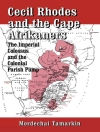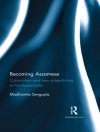This award–winning study examines American Indian communities in Southern New England between the Revolution and Reconstruction.
From 1780–1880, Native Americans lived in the socioeconomic margins. They moved between semiautonomous communities and towns and intermarried extensively with blacks and whites. Drawing from a wealth of primary documentation, Daniel R. Mandell centers his study on ethnic boundaries, particularly how those boundaries were constructed, perceived, and crossed.
Mandell analyzes connections and distinctions between Indians and their non-Indian neighbors with regard to labor, landholding, government, and religion; examines how emerging romantic depictions of Indians (living and dead) helped shape a unique New England identity; and looks closely at the causes and results of tribal termination in the region after the Civil War. Shedding new light on regional developments in class, race, and culture, this groundbreaking study is the first to consider
all Native Americans throughout southern New England.
Winner, 2008 Lawrence W. Levine Award, Organization of American Historians












